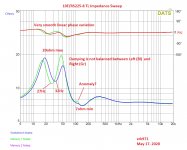there are no holes, but the website mentions... "vented voice coil for heat exchange and reduced compression".
Look at the former for the voice coil. Sometimes there are cross drilled holes visible and this could be the venting too - radial flow vents.
Last edited:
I took out the DATS tool to measure the impedance of my new Purifi 6.5in woofers (to come later). I thought I should give the TL's their first measurement. Microphone is still to be done - I wait for a long time on some speakers to make sure I am not biased by the data when forming my subjective listening impressions. As my opinion that these are in the top 3 speakers I have ever heard, I won't worry about the measurements not being supportive of my impressions.
The impedance sweep shows how the electrical impedance of the drivers, and the XO, and the aeroaciustics of the TL all interact together. In a typical vented reflex speaker, there will be two peaks straddling the vent tuning frequency. In a tapered TL with damping, we expect that there will still be two peaks, but they will be somewhat squashed down and the minima in between will be elevated above the DCR. The more stuffing you add, the more squashed the two peaks will be, and at some point, it will look like a bread loaf with two little bumps. The tuning frequency on my two TL's are coming in at 26.7Hz and 32Hz - and shows the effect of the damping (or perhaps a small air leak in the sealsf or the back panel). In any case, the 26.7Hz is very good - and shows a deep bass tuning close to the driver's free air resonant frequency. The maximum impedance is only 20ohms and the minimum is 7ohms - a very mild load for an 8ohm amp and easily driven by any amplifer. The phase variation is also very smooth and no wild dips and peaks - so the XO as designed, is excellent. It is actually one of the best phase responses I have seen measured in a crossover.
The circa 30Hz tuning frequencies substantiate that the TL is working as designed, and that is produces some incredibly deep articulate bass.
There is a small bump near 100Hz on the right speaker - and I will need to investigate to see the cause. A free air sweep may be in order. Look for mechanical sources like a loose panel or bolt etc.
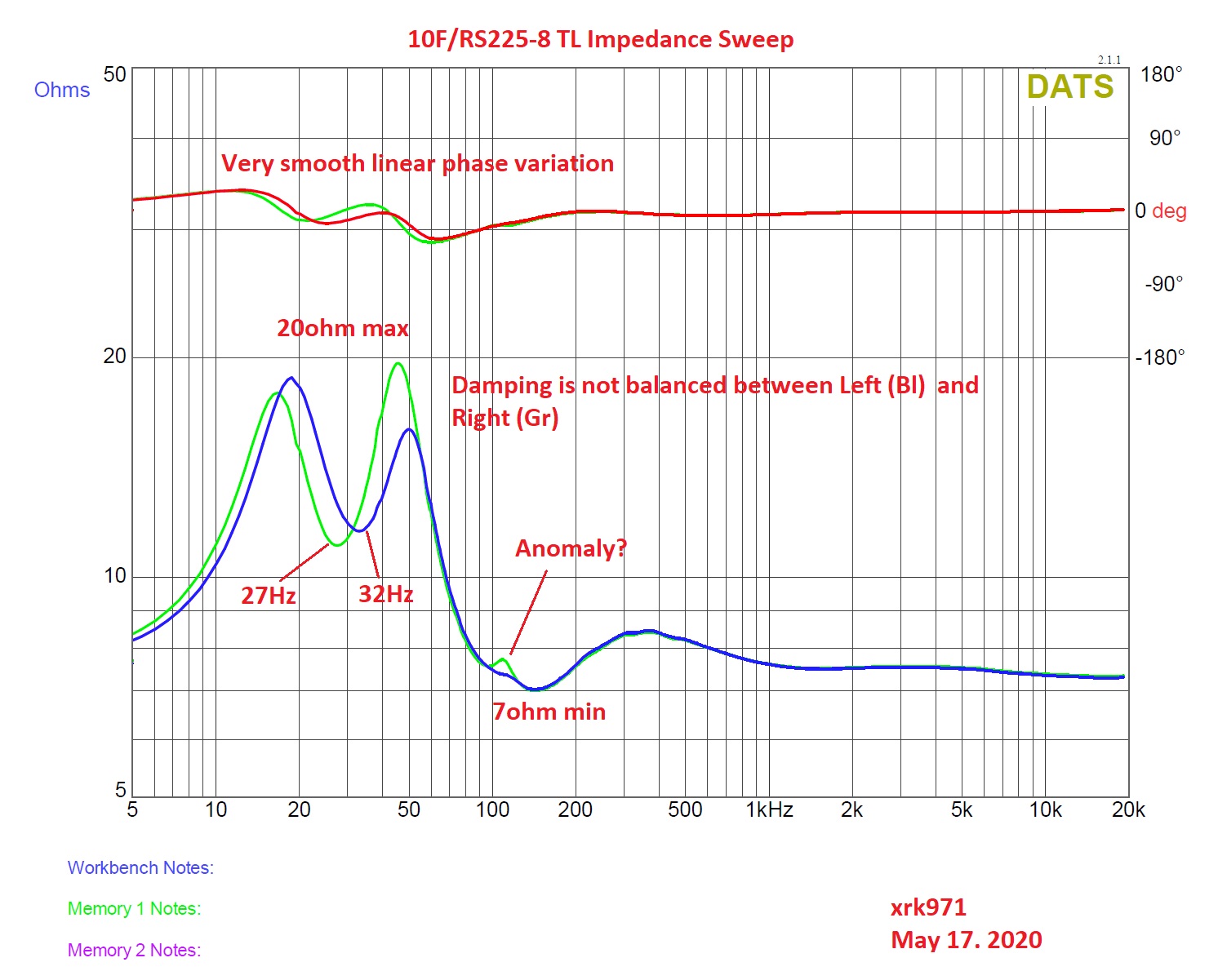
The impedance sweep shows how the electrical impedance of the drivers, and the XO, and the aeroaciustics of the TL all interact together. In a typical vented reflex speaker, there will be two peaks straddling the vent tuning frequency. In a tapered TL with damping, we expect that there will still be two peaks, but they will be somewhat squashed down and the minima in between will be elevated above the DCR. The more stuffing you add, the more squashed the two peaks will be, and at some point, it will look like a bread loaf with two little bumps. The tuning frequency on my two TL's are coming in at 26.7Hz and 32Hz - and shows the effect of the damping (or perhaps a small air leak in the sealsf or the back panel). In any case, the 26.7Hz is very good - and shows a deep bass tuning close to the driver's free air resonant frequency. The maximum impedance is only 20ohms and the minimum is 7ohms - a very mild load for an 8ohm amp and easily driven by any amplifer. The phase variation is also very smooth and no wild dips and peaks - so the XO as designed, is excellent. It is actually one of the best phase responses I have seen measured in a crossover.
The circa 30Hz tuning frequencies substantiate that the TL is working as designed, and that is produces some incredibly deep articulate bass.
There is a small bump near 100Hz on the right speaker - and I will need to investigate to see the cause. A free air sweep may be in order. Look for mechanical sources like a loose panel or bolt etc.
Attachments
Finally got a chance to measure the TL’s with a calibrated mic (Cross Spectrum Labs UMIK-1) and REW. These are done at 0.5m to minimize room effects with 6 cycle frequency dependent window (FDW) gating. I also measured the TL vent at the exit plane to determine the TL output independent of the room gain. Amp used was XRKaudio TPA3255 reference Class D with PFFB. PSU was 50.2v 800w SMPS, preamp consists of Aksa Lender driving a custom LME49724 SE TI balanced converter.
The measurements above 200Hz resemble what the sealed version does. Below this, the TL augments the bass but hard to see where the effect of room gain ends. It does look like it reaches about 35Hz. Maybe lower.
Here is SPL and distortion at various components vs Freq for 2.0Vrms input. I also measured it at 5.0Vrms and 8.0Vrms. The 2.0Vrms at 0.5m scales like 2.83Vrms at 1m. This shows speaker efficiency is 82.5dB as expected. There is a 2kHz distortion bump. This was confirmed to be intrinsic to the RS225 as disconnecting 10F still resulted in the same 2kHz bump.
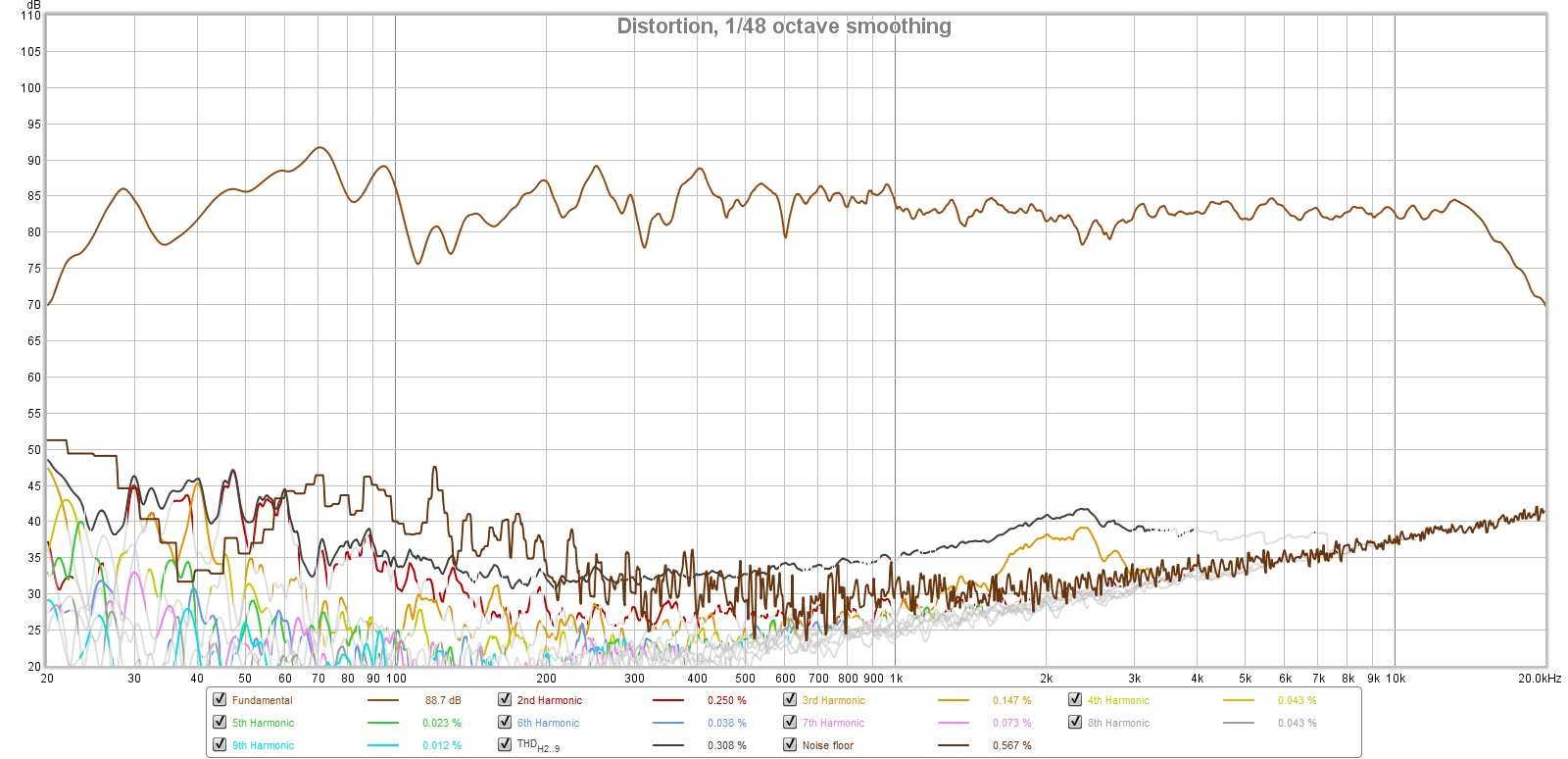
Here is the SPL and measured acoustic phase. You can see that it is fairly flat and linear - down to about 200Hz where we get effects of TL. The TL output port is fairly close to the floor and I think I am getting f a floor bounce cancellation dip at 130Hz.
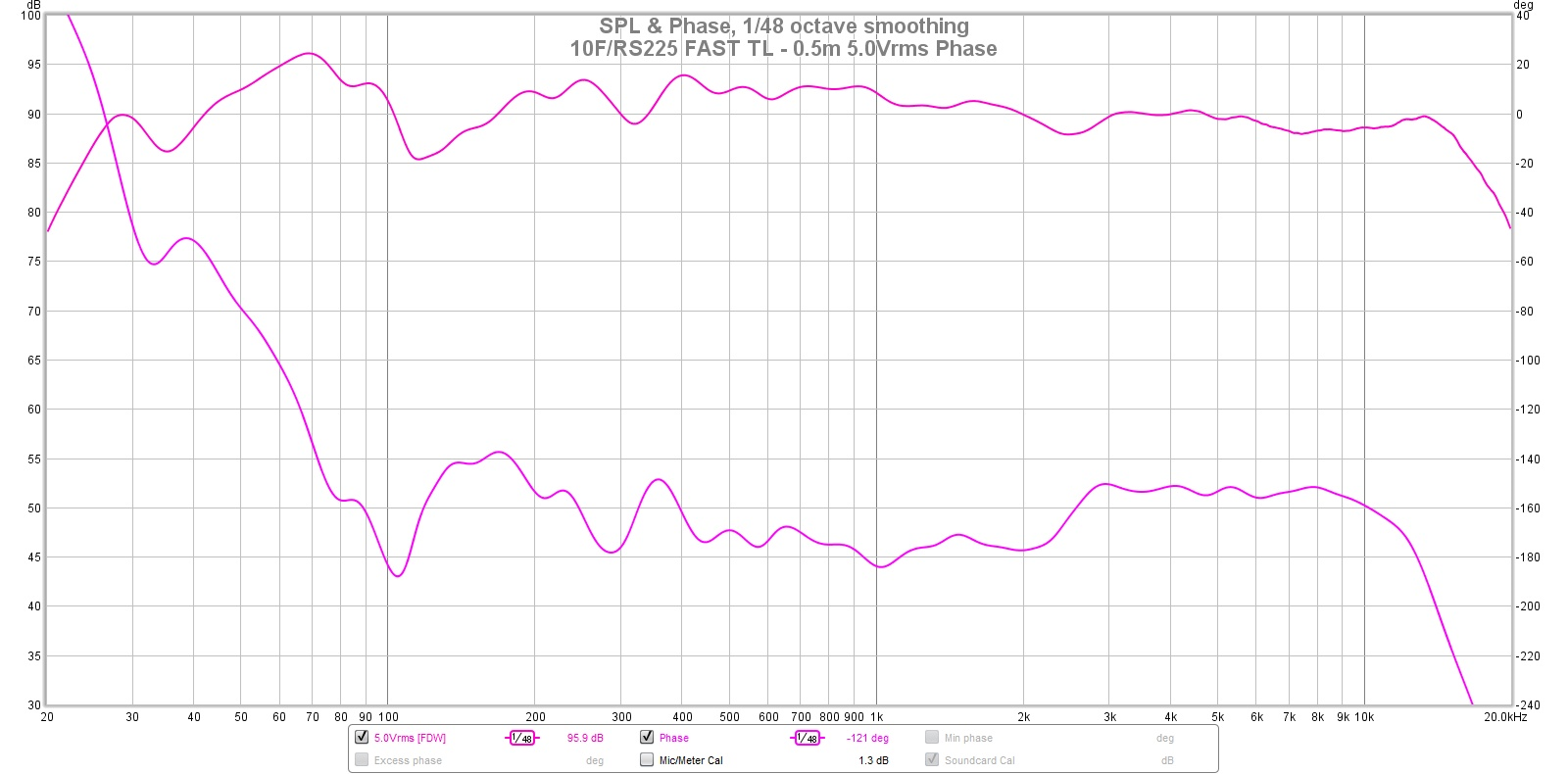
Here is measured output of TL vent only. Taken at lower 0.71Vrms to avoid mix clipping.
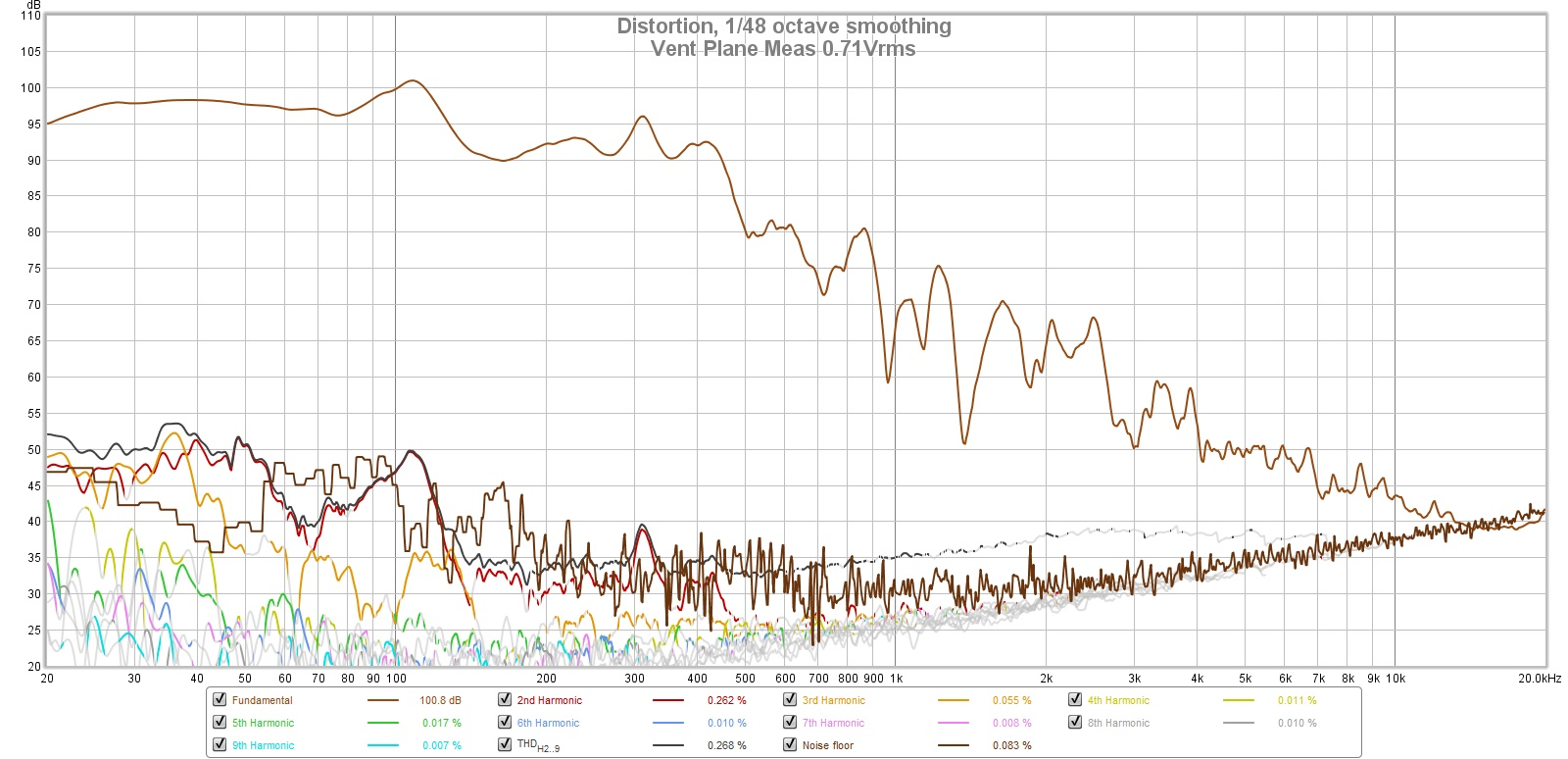
Here is the group delay of the woofer and TL only - very good at under 5ms down to 45Hz:
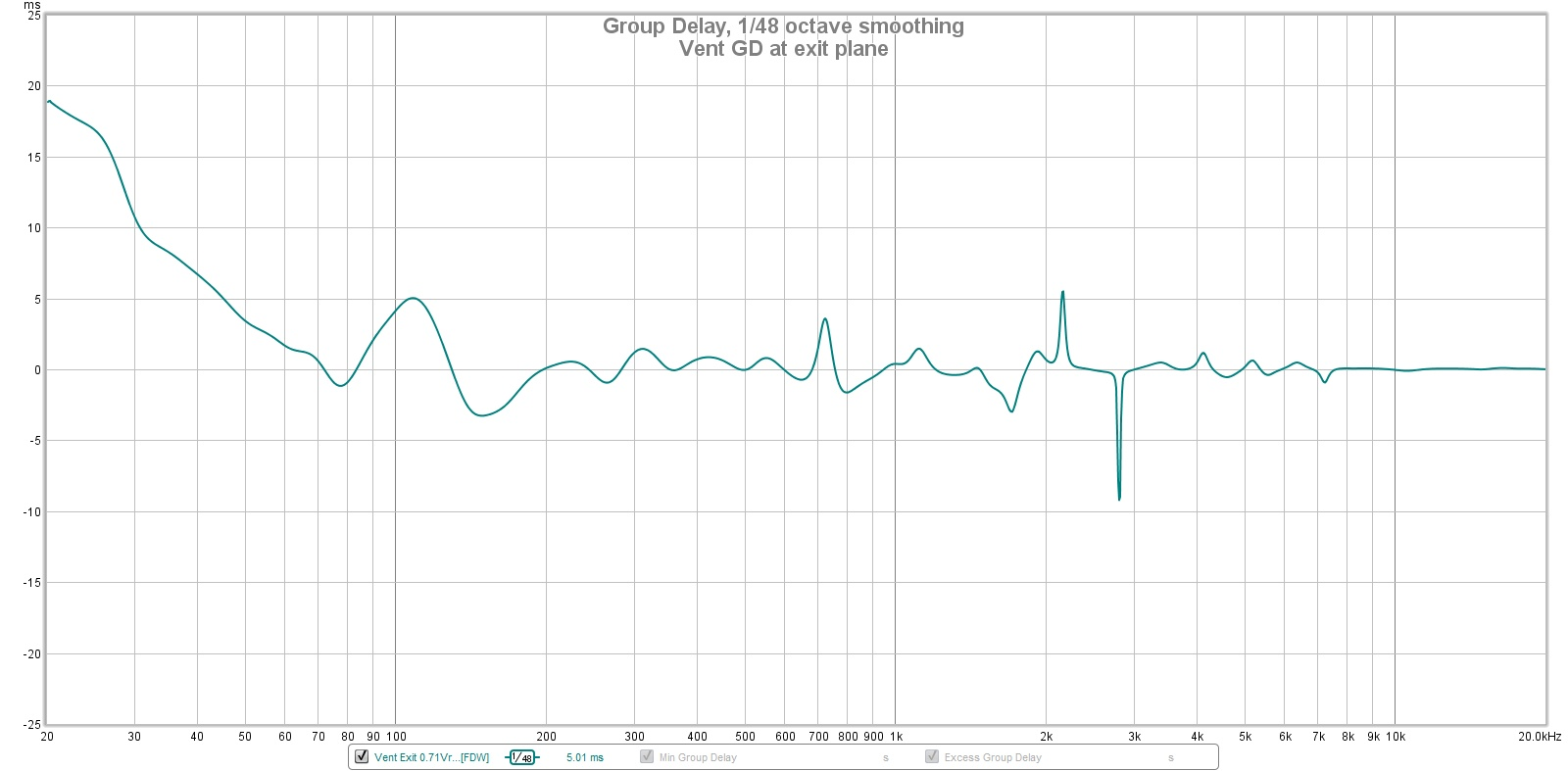
The measurements above 200Hz resemble what the sealed version does. Below this, the TL augments the bass but hard to see where the effect of room gain ends. It does look like it reaches about 35Hz. Maybe lower.
Here is SPL and distortion at various components vs Freq for 2.0Vrms input. I also measured it at 5.0Vrms and 8.0Vrms. The 2.0Vrms at 0.5m scales like 2.83Vrms at 1m. This shows speaker efficiency is 82.5dB as expected. There is a 2kHz distortion bump. This was confirmed to be intrinsic to the RS225 as disconnecting 10F still resulted in the same 2kHz bump.
Here is the SPL and measured acoustic phase. You can see that it is fairly flat and linear - down to about 200Hz where we get effects of TL. The TL output port is fairly close to the floor and I think I am getting f a floor bounce cancellation dip at 130Hz.
Here is measured output of TL vent only. Taken at lower 0.71Vrms to avoid mix clipping.
Here is the group delay of the woofer and TL only - very good at under 5ms down to 45Hz:
Attachments
-
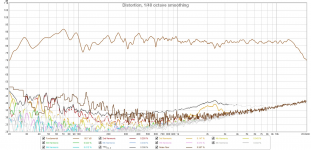 DE94D190-9CDB-4E91-A5A7-5AF7955A83F8.png500.3 KB · Views: 2,531
DE94D190-9CDB-4E91-A5A7-5AF7955A83F8.png500.3 KB · Views: 2,531 -
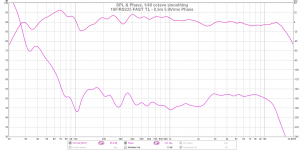 9D2381AB-57D6-4D96-B7D9-899D7B035EBE.png339.4 KB · Views: 940
9D2381AB-57D6-4D96-B7D9-899D7B035EBE.png339.4 KB · Views: 940 -
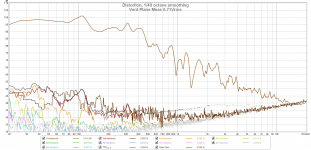 5EBACFC6-394C-4344-B316-E117D49EA998.png669.6 KB · Views: 1,275
5EBACFC6-394C-4344-B316-E117D49EA998.png669.6 KB · Views: 1,275 -
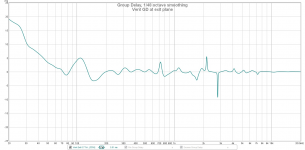 4700F669-728A-4A64-9D0E-55E219001A36.png232 KB · Views: 55
4700F669-728A-4A64-9D0E-55E219001A36.png232 KB · Views: 55 -
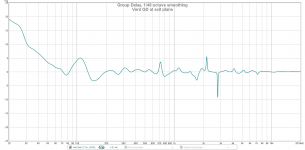 E368E9FA-CF7B-4EB0-BAEF-D6B1864B7EEE.png232 KB · Views: 961
E368E9FA-CF7B-4EB0-BAEF-D6B1864B7EEE.png232 KB · Views: 961
That c. 2.2KHz spike in HD3 looks to be the result of insufficient suppression of the cone's main bell mode. It's what I'd anticipate seeing anyway with the 225 on a 1st order. It tends to need hammering down a long way below the nominal to avoid seeing some of these traits.
Last edited:
Hi folks, if anyone is thinking about building these speakers, the RS225-8 is on sale for only $38 - ends today. It’s a great price that I have never seen this low before. It seems international shipping for a pair via UPS is quite reasonable too - only $56 for the pair across the world. So for a little more than the regular price for two, you can get a set anywhere in the world. I know Perceval has been trying to get a pair for the longest time.
IIRC the RS28a-4 & the soft dome version were produced by Usher. When things went pear-shaped there with little / no warning, PE (aka 'Dayton') had to find a new manufacturer, & couldn't simply shift production across -didn't have the same components, tooling etc. Alas. So new designs had to be worked up, PDQ.
Last edited:
May be a little off the topic but this is about THIEL 10F/8424G02. I am building a pair of desktop micro monitors (1.5 liter) to cover 80hz and up. Can anyone comment on the performance of passive radiator vs ported box?
Modeling in WinISD gives strange group delay swings (below zero delay???) with PR....
Modeling in WinISD gives strange group delay swings (below zero delay???) with PR....
IIRC the RS28a-4 & the soft dome version were produced by Usher. When things went pear-shaped there with little / no warning, PE (aka 'Dayton') had to find a new manufacturer, & couldn't simply shift production across -didn't have the same components, tooling etc. Alas. So new designs had to be worked up, PDQ.
So, Dayton's stuff is not made at Usher anymore?
Yes, please see Post 1.
There is a typo in the title of the schematic drawing. But if you look at driver label it is 4ohms.
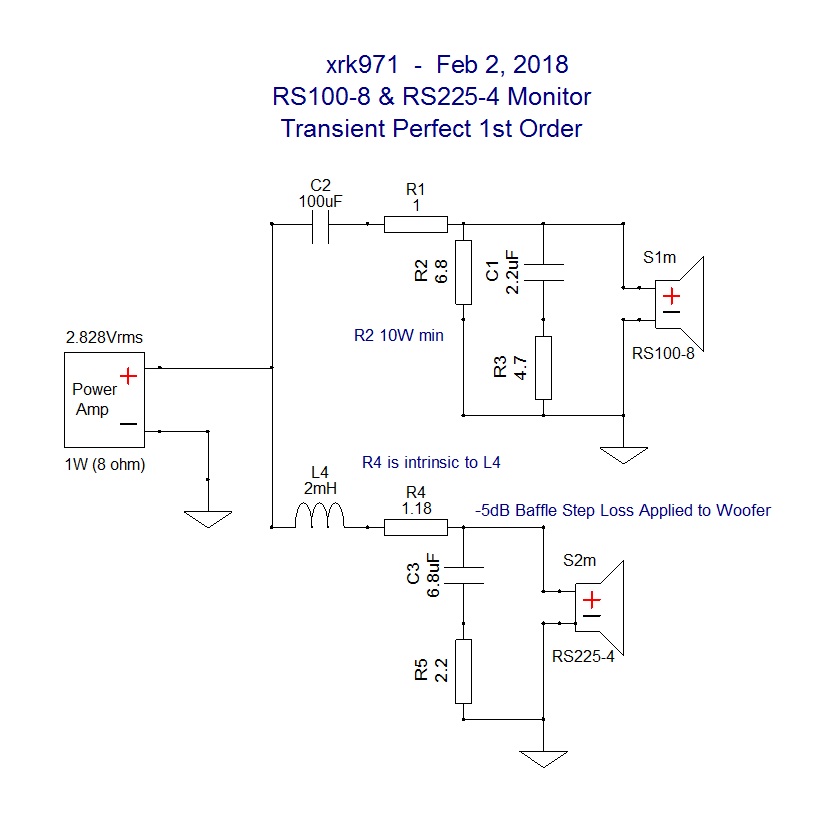
Basically switch to 2mH coil vs 4mH. I have not personally tested it, so it might not be perfect.
If you want perfect tried and tested, then the 8ohm XO is guaranteed to work well.
There is a typo in the title of the schematic drawing. But if you look at driver label it is 4ohms.
Basically switch to 2mH coil vs 4mH. I have not personally tested it, so it might not be perfect.
If you want perfect tried and tested, then the 8ohm XO is guaranteed to work well.
Last edited:
May be a little off the topic but this is about THIEL 10F/8424G02. I am building a pair of desktop micro monitors (1.5 liter) to cover 80hz and up. Can anyone comment on the performance of passive radiator vs ported box?
Modeling in WinISD gives strange group delay swings (below zero delay???) with PR....
Passive rad allows smaller box and no chuffing - not that you would ever drive these that hard. I like the sound of PR’s vs reflex port. But a TL still beats a PR any day. You can get very low GD with a properly damped TL.
Yes, please see Post 1.
There is a typo in the title of the schematic drawing. But if you look at driver label it is 4ohms.

Basically switch to 2mH coil vs 4mH. I have not personally tested it, so it might not be perfect.
If you want perfect tried and tested, then the 8ohm XO is guaranteed to work well.
Im confused- The RS225-4 you use 4MH coil and 225-8 you use 2MH? I hit order on my PS95 and all crossover parts already for my RS225-4/PS95 Combo. Which was the 2mH coil in the crossover you attached from my question
Related to the RS225 TL. I’m working on a new tapered TL for the PTT6.5 driver. It’s looking pretty good from simulation standpoint. Quite compact. Not FAST but quasi transient perfect Harsch XO.
Simple Passive Harsch XO Using PTT6.5 and RS28F in a Waveguide
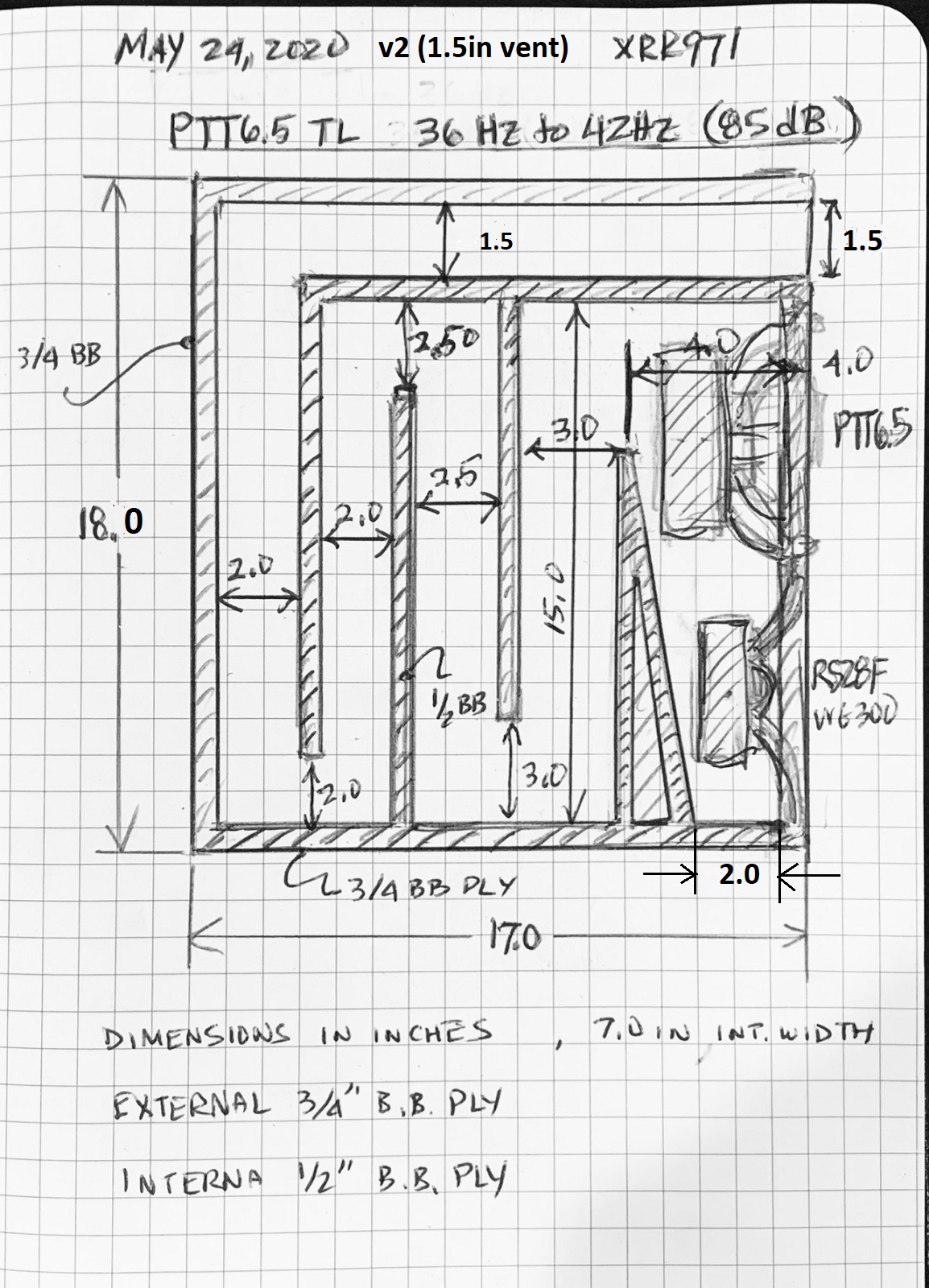
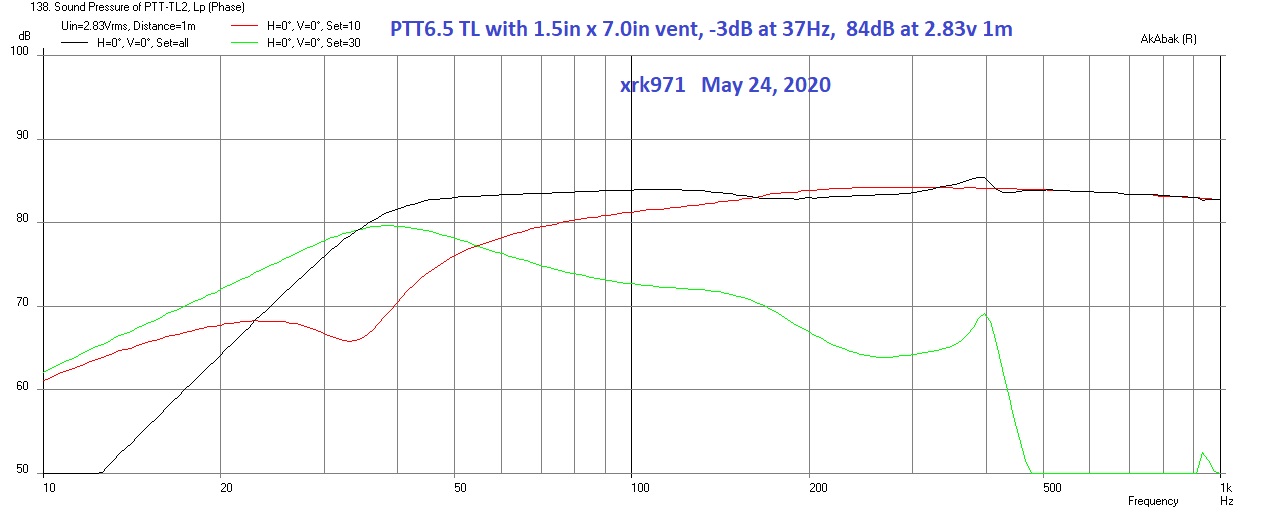
36Hz -3dB and 84dB nominal SPL in 4pi space at 2.83v.
Simple Passive Harsch XO Using PTT6.5 and RS28F in a Waveguide
36Hz -3dB and 84dB nominal SPL in 4pi space at 2.83v.
So, Dayton's stuff is not made at Usher anymore?
Not as far as I know. Not those tweeters anyway.
- Home
- Loudspeakers
- Full Range
- 10F/8424 & RS225-8 FAST / WAW Ref Monitor
